It’s the most important moment in your relationship.
“Will you subscribe to my email list?”
Yes, yes, a million times yes!
Congratulations! You did it! Engaged.
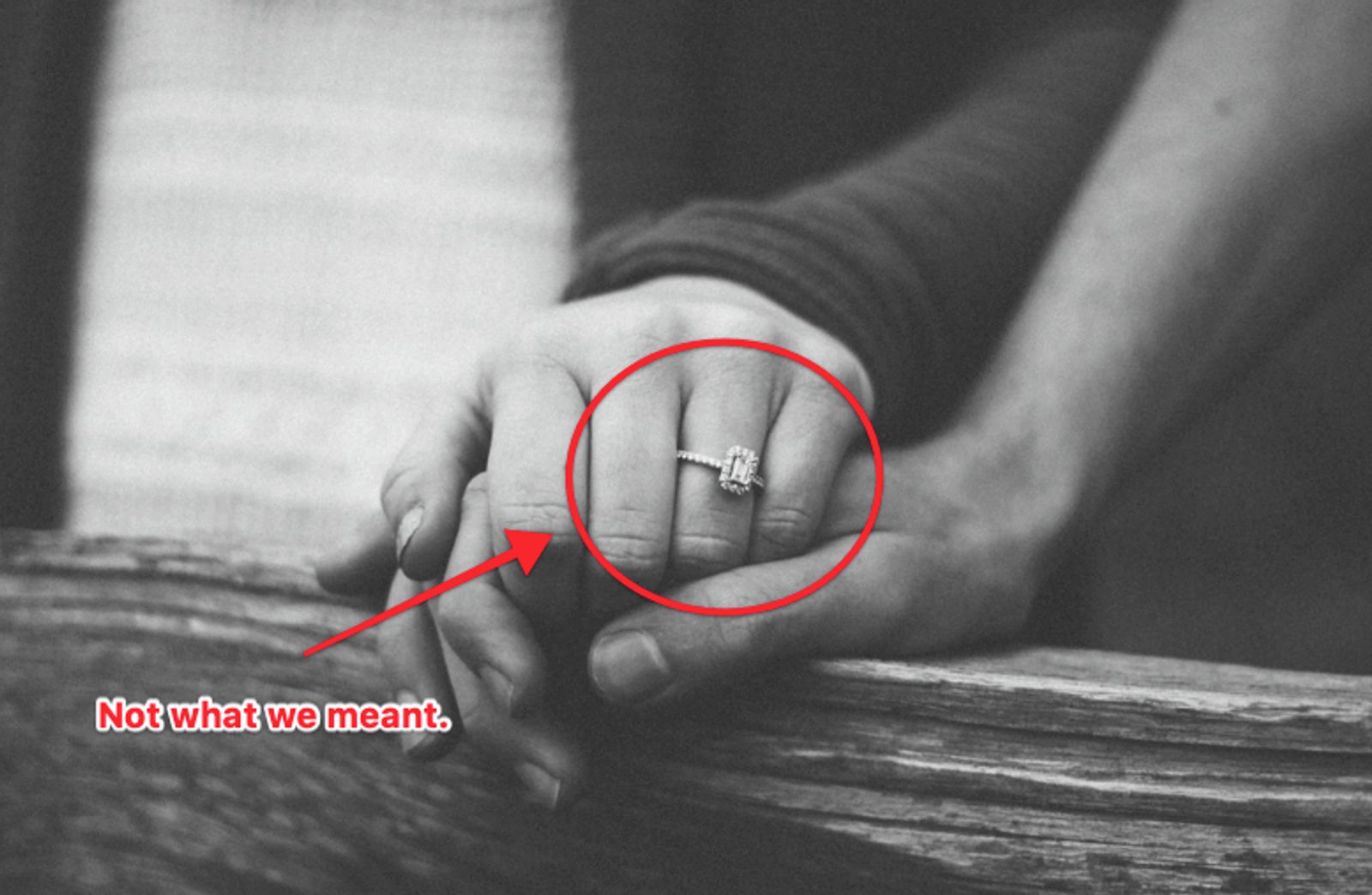
No no, we meant EMAIL engaged.
Actually, I meant email engagement. There are no rings in this case, but be prepared to offer a lifetime of value.
You mastered the email capture part. You have a list of customers and you’ve started to build up some email engagement with them.
Cool. They’re getting the content that they signed up for. So the hard part’s over, right? Time to just kick back and let emails flow and they will work like magic.
Nope.
According to digital marketing firm Lyris, you should expect to lose 30% of your email subscribers
every year.

30%. That’s not a small number. If you’re not vigilant with engagement efforts, your rates can slump faster than the time it takes to hit send on your next campaign.
So what can you do to make sure that the other 70% stay regularly engaged?
By the end of this post you’ll know:
- What email engagement is (the definition isn’t truly exact)
- 7 tips to improve email engagement – plus unforgettable examples
- How you should measure email engagement metrics (beyond the standard answer of open and click-through rates)
What is email engagement?
Email engagement is a measure of how people interact with your emails.
Open rate, click rate, and conversion rate are the most common email engagement metrics.
You can measure email engagement, but how you measure it depends on a different question.
How do you define “success?”
- What customer actions will be more valuable to you (and them)?
- What email metrics (such as opens or clicks) need more improvement?
- What are the long-term impacts from each email campaign (and not just each single email)?
Consider these questions when forming your email marketing strategy, then try these 7 tips for better email engagement.
7 email engagement tips (with unforgettable examples)
Email engagement statistic: 49% of consumers said that they would like to receive promotional emails from their favorite brands on a weekly basis.
Yay, right?
Customers who opted-in to your email list want to hear from you – but they might change their tune if your emails make them wish they were in line at the DMV.
Consumers make buying decisions based on feelings (not logic).
Gary Bencivenga, who has been called the world's best living copywriter, argues that people buy things based on how they feel:
“The vast majority of products are sold because of the need for love, the fear of shame, the pride of achievement, the drive for recognition, the yearning to feel important, the urge to look attractive, the lust for power, the longing for romance, the need to feel secure, the terror of facing the unknown, the lifelong hunger for self-esteem and so on.
Emotions are the fire of human motivation, the combustible force that secretly drives most decisions to buy. When your marketing harnesses those forces correctly you will generate explosive increases in response.” – Gary Bencivenga
How people feel about your email will determine if they engage (or don’t engage).
Here are 7 ways to boost email engagement by tapping into emotions:
- Use social proof
- Teach them something useful
- Celebrate their achievements
- Send targeted recommendations
- Make your emails personal
- Add movement to your emails
- Be helpful, not just promotional
1. Use social proof
What is one thing that always drives decisions (good and bad)?
Knowing that other people have done it first.
Studies show that nearly 70 percent of online consumers look at a product review prior to making a purchase.
Even more telling – product reviews are 12-times more trusted than product descriptions and sales copy.
That’s social proof.
Social proof is one of Robert Cialdini's 7 psychological principles of persuasion. In his book Influence: The Psychology of Persuasion, Cialdini defines social proof as people doing what they see other people doing.

It’s a definition that’s based upon the idea of safety in numbers.
"We can see that social proof is most powerful for those who feel unfamiliar or unsure in a specific situation and who, consequently, must look outside of themselves for evidence of how best to behave there.” – Robert Cialdini, Influence
Seeing what other people have done or what they think about something does a lot. It...
- Sparks intrigue
- Gives answers to known problems
- Presents new, useful information
Have you ever seen an email that name-drops a famous customer? Or includes a testimonial? Both of those are examples of ways to add social proof.
One effective method? Hard and fast numbers.
The language-learning app Duolingo sent this email to their customers.
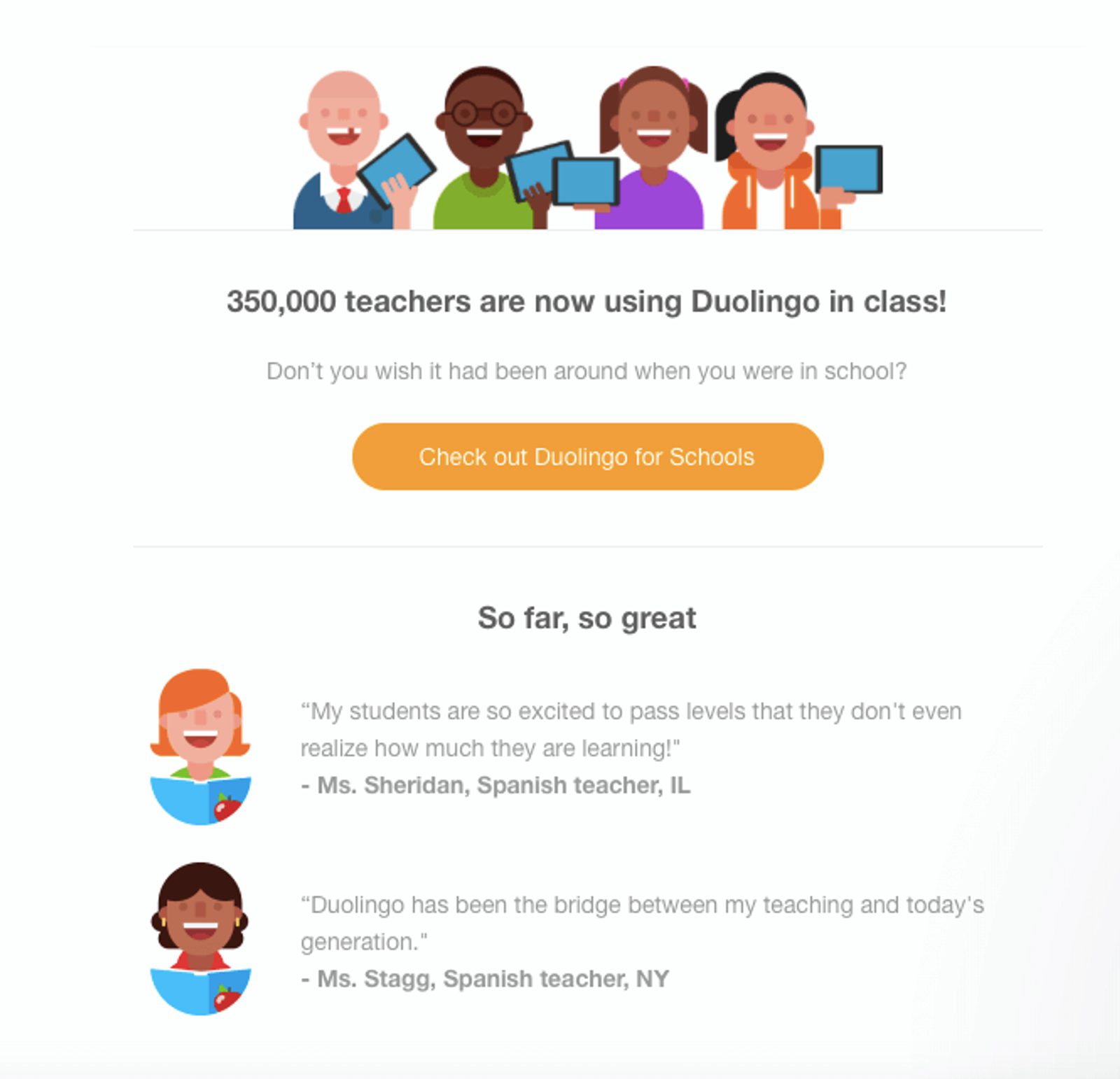
350,000 teachers use and love their service. Will you be next now that you know? (Source: Hatchbuck)
350,000 teachers use their service. That huge number makes a huge impact on the people you’re trying to reach.
Plus they kick the social proof up a couple of extra notches by including testimonials, which brings those 350,000 faceless users to life.
People feel better doing something if they have proof that:
A) Other people have done it
B) Other people have been successful doing it
Take fashion e-tailer ModCloth (you’ll see that name again, they are a favorite brand of mine).
ModCloth encourages its community to “Be the Buyer” by voting on which styles they think ModCloth should sell in the future.
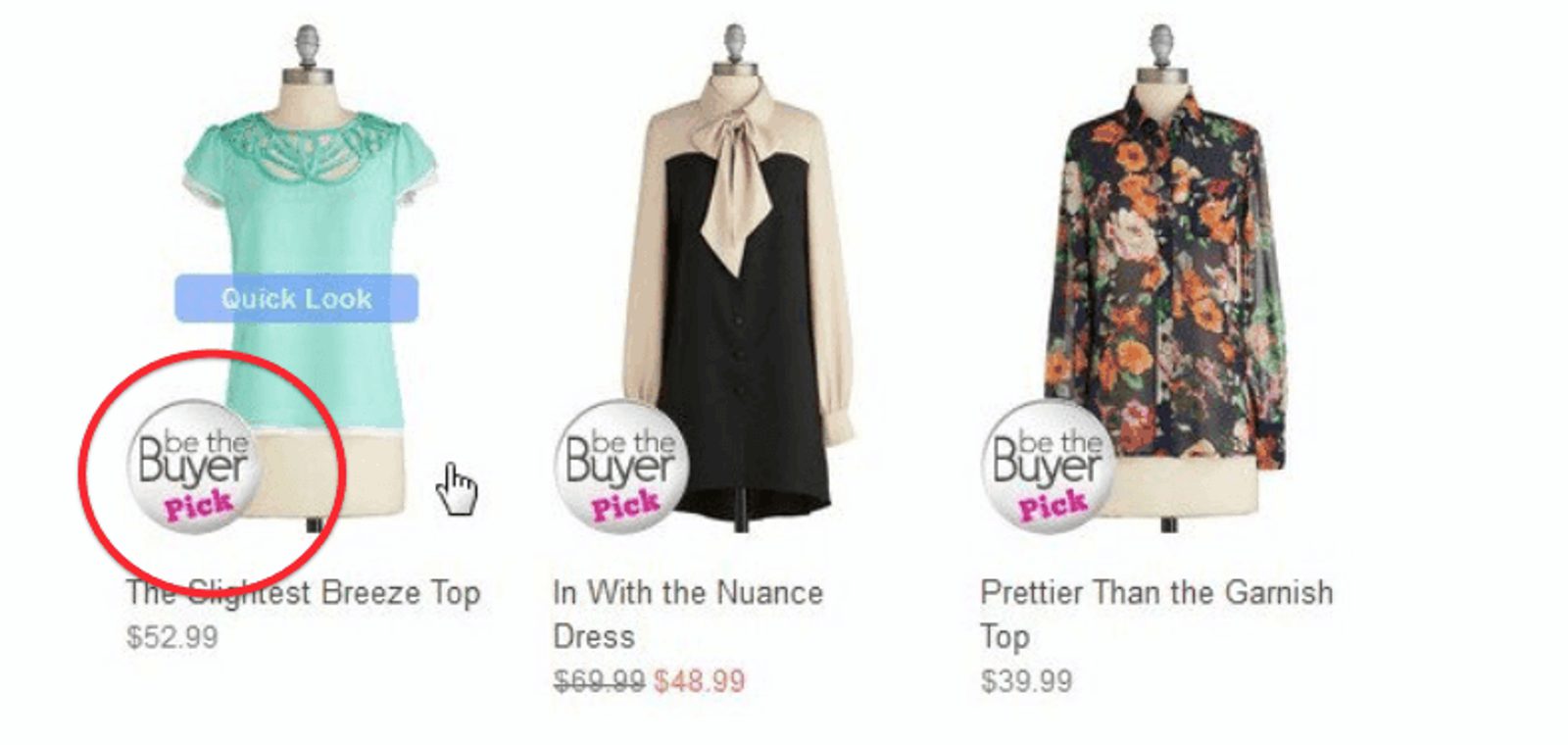
(Source: ModCloth)
The community caught on, because styles with the “Be the Buyer” badge sell at twice the rate of styles without a badge.
2. Teach them something useful (about you or them)
People who signed up for your email list did it to get something like:
- A free template download
- Gated content
- A free gift
- Entry for a contest
- A discount code
If you want your email engagement rate to go up after they get what they came for, you need to give them things they value.
Note – this doesn’t have to be a tangible thing. It may not seem as fun as a free gift or discount code, but education can be gold to your customers.
And when you educate them about themselves, their interest will be even more heightened.
Look at this email that Mint sends its users.

(Source: customer.io)
This tells a Mint user about their spending and saving habits in real time (and bonus: this is a weekly summary).
Weekly summaries like this are so great because they create a habit for someone to fall into. If you can get people hooked on checking their stats at the same time each week, they're always going to engage with you.
Spotify created a whole new brand experience for their users when they released Discover Weekly, a feature which curates a playlist of 30 songs for users every Monday based on their preferences and listening habits.

(Source: Product Habits)
And it went over like gangbusters.
Discover Weekly attracted 40M new users to the service, and more than 5 billion tracks have been streamed through the playlist feature.
By creating Discover Weekly, Spotify created something that its users not only enjoy, but also look forward to.
And like Mint’s weekly summary email, it teaches the customer something they’ll find useful (whether it’s budgeting info or music they never knew they might like).
3. Celebrate their achievements
Who doesn’t love to be celebrated?
Between birthdays, anniversaries, and milestones, people love to be loved.
More importantly, they love to be recognized.
Pocket does this in the celebratory email they send their users.
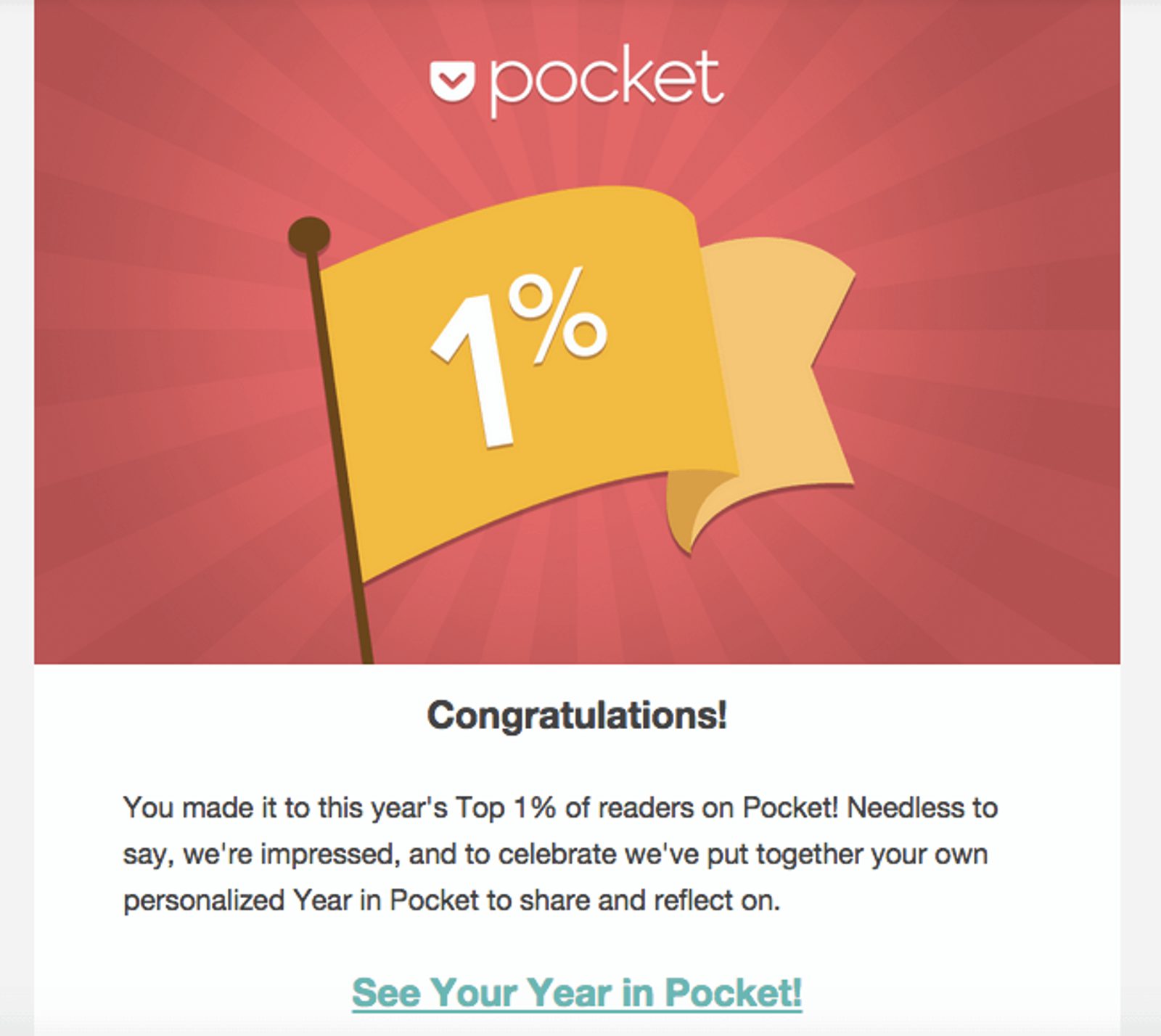
As a frequent Pocketer myself, I would LOVE to get this email. (Source: customer.io)
This is a click-worthy email, but it also is a chance for engagement outside of the email. Pocket encouraged social sharing of their accomplishments.
This kind of exposure increases the chance for more sign-ups (and therefore, more engagement).

“50 books worth of blog posts” is great visually descriptive copy.
Not only is this great for the brand and fun for the user, but it’s also a great chance to score some awesome copy – straight from your customers.
4. Send targeted recommendations
You can send targeted emails to people, and this is how:
- Find out their interests based on link clicks, form fields they submit, site tracking, or other contact actions
- Target people based on their interests and behaviors
- Send emails with content that appeals to those specific interests
Cool, right? But how do you actually do any of that?
Platinum Skin Care used audience segmentation, which helped them convert 17% of their leads into paid customers.
Audience segmentation is just you saying “this specific audience of people have something in common, so I’m going to group them all together.”
For Platinum Skincare, it started with a short quiz on their website to learn more about what someone was looking for in skincare.

(For an in-depth view at Platinum Skincare’s audience segmentation success, watch their story Here).
Following that quiz, Platinum Skincare sends out multiple emails targeting interests and pain points based on the quiz responses.

As you can tell, this customer’s primary interest was treating acne.
Why did this work?
Because they weren’t trying to force a sale in every email. They instead used the collected data to segment their audience – and send emails that solved each person’s specific problem.
Platinum Skin Care does targeted content well. But the masters of targeted content? Netflix.
Few people have ever known me as well as Netflix. And they have the emails to prove it.
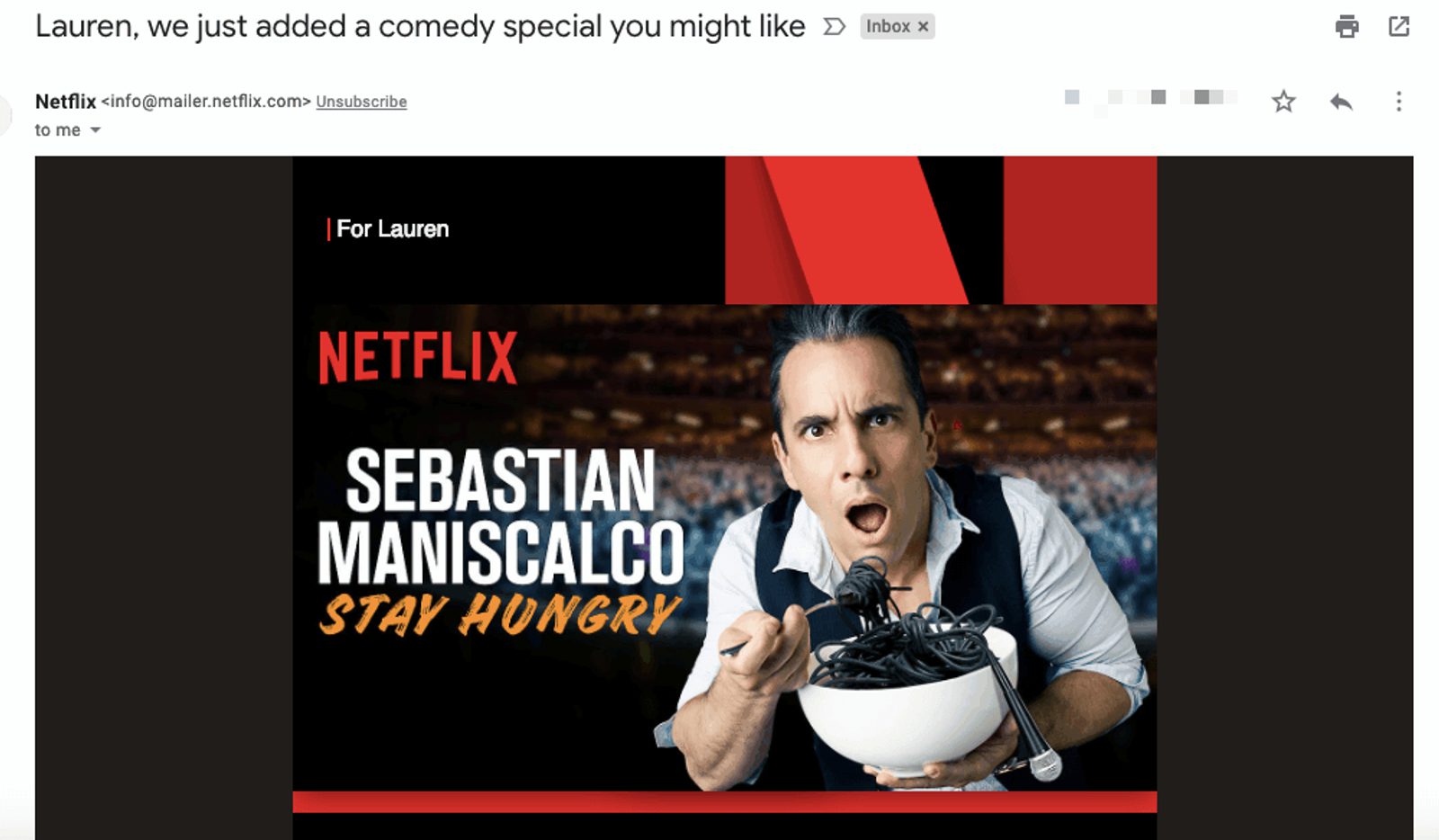
Comedy? Yes. Hungry? Always. Saturday morning binge-in-bed plans have been made.
I watch a million comedy specials on Netflix. John Mulaney, Jim Gaffigan, Ali Wong, they are all amazing. Netflix knows how much I love them, so they sent me targeted content to increase my engagement with them.
(Spoiler alert – it worked).
5. Make your emails personal
Email personalization is near the top of the list of email marketing best practices. 75% of consumers say they are more likely to buy from a brand that personalizes messages.
What does being personal in an email mean?
Joanna Wiebe of Copy Hackers outlines three elements your tone needs to be effective.
- Enact the value your visitors desire, like dependability or entertainment
- Engage your visitors by making your copy more enjoyable to read (i.e., less like work)
- Stimulate positive feelings that then get associated with your brand
All of these have a hand in creating success from a personalized email.
Here’s a great example of a personal email campaign.
For their 20th birthday celebration, EasyJet sent out campaigns that used two of the tips on this list:
- Teach them something
- Celebrate their achievements
This campaign gave the user, Alex, an email scrapbook of his entire relationship with the brand. Talk about personal.
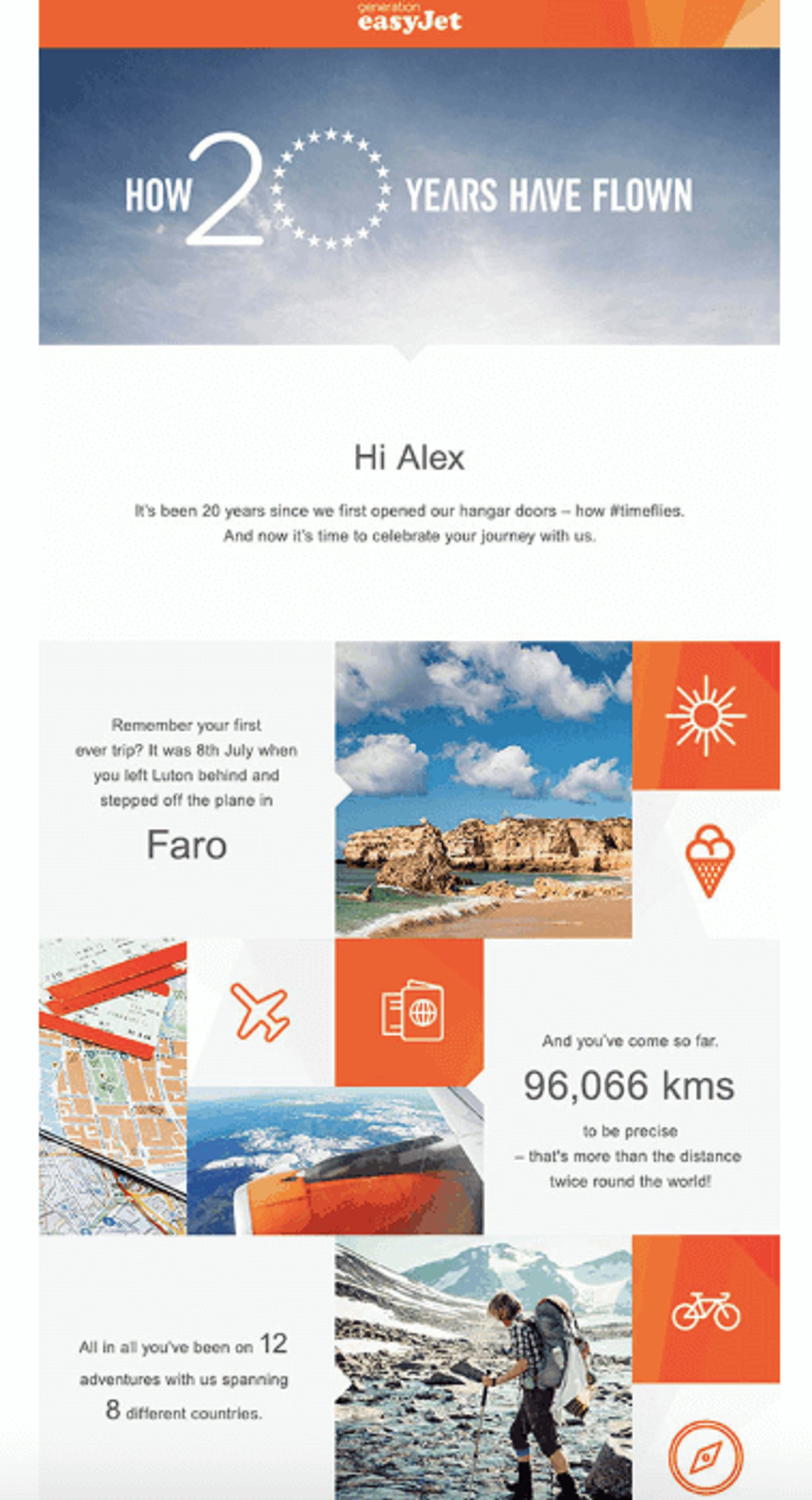
Alex spent a lot of time as an EasyJet customer, and they remembered every moment. Tears.
Personal connections drive action everywhere we look. From family and romantic relationships to networking for a job, personal connections drive emotion and those emotions drive action.
Like when EasyJet shows Alex that he has...:
- Traveled 8 different countries with them, which…
- ...spanned 96,066 km, which was the distance equivalent of…
- ...circling the world more than twice (hard visual to forget)
Maybe now Alex will set a goal of a third time around the world’s distance, or visiting another 2 countries (double digits!). And with this level of personalization, he’ll want to keep doing it with EasyJet.
But wait...how did EasyJet know what to send Alex?
Answer: segmentation.
When Brennan Dunn used personalization to boost his sales by 70%, he used segmentation to get the information he needed.
When you learn everything you can about your customers, you can segment that data in 3 ways
- Demographic
- Behavioral
- Intent
Brennan used this info to permanently increase his sales. When you know what your audience wants, you can give it to them.
Creating a story about your brand’s presence in the lives of those experiencing a milestone can not only continue your engagement with a customer but also increase it.
6. Add movement to your emails
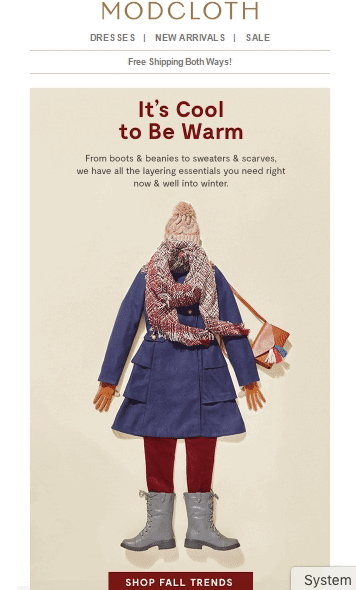
What if an email could help you get dressed every morning?
This example puts ModCloth right into the closets of its users (like me) and makes the email experience helpful and interactive.
From this email alone ModCloth shows me 4 great looks that THEY can help me achieve. This GIF went beyond a product image and showed me—in real-time—what a complete ModCloth style could look like.
I want to look that good. ModCloth has what I need to look good. My 26-year closet battle can finally end.
According to Mike Isaac at The New York Times, “[GIFs] have become a mainstream form of digital expression, a way to relay complex feelings and thoughts in ways beyond words and even photographs.”
Mike Isaac really hit the nail on the head – there’s an emotional component to a great GIF. If you want someone to feel excited about your email offer, GIFs can work.
How do GIFS affect your email marketing?
Animation draws attention to the eye and acts as a visual cue. They are simple to implement and have decent performance.
MarketingSherpa said that GIFs have revamped the online experience and can help increase email conversion rates.
Email Institute found that animated GIF emails see an increase in click-through rates of up to 26%.
A Dell case study showed increased conversion rates via email by 103%.
The study also showed:
- 6% increase in open rate
- 42% increase in click rate
- 109% increase in revenue
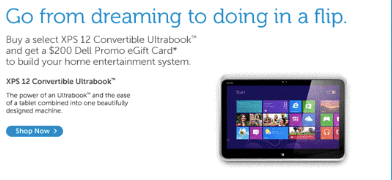
Not bad results for a simple little attention-grabbing animation.
7. Be helpful, not just promotional
If you want to increase your user engagement metrics, your campaigns need to add value without creating work for your readers.
Customers get waterboarded with promotional emails every day. They get distracted. And you lose them – even though they wanted to stick around.
If you want to keep your readers, think about what you can send them that’s helpful. How can you help them keep track of all the things they need to do?
Send emails like…
- Cart abandonment emails
- Appointment reminders
- Time to refill your supply emails
Here’s a great example of a cart abandonment email from DoorDash.
(Granted, I’ve never received a cart abandonment email from DoorDash because I don’t abandon food delivery orders, but this is so clever and effective I might have to “forget” the next time I’m ordering emergency fries.)

If you can ignore that poor, sad burger, you might be a monster. Plus a pun? Please take my money. (Source: DoorDash)
Cart abandonment emails are every email marketer’s best friend. According to SaleCycle, nearly half of all abandoned cart emails are opened—and over a third of clicks lead to purchases back on site.
If your cart abandonment email is good enough, your email engagement will go up. Some email marketing services (like ActiveCampaign) offer automated abandoned cart email features.
Are you ready to try these email engagement tips?
At the root of all these tips is a simple idea – Create conversations, not just campaigns.
Email engagement is a long-term investment, not a one-time shopping spree. At the other end of your email is a human, not a computer – so treat your campaigns with care.
How should you measure email engagement?
The best way to measure email engagement is to keep tracking your open and click-through rates.
Sort of.
Some people say age is just a number. Well, so is an open rate figure. I’m not saying the number isn’t important – but what’s more important is why the number is what it is.

Any guesses?
The key problem with only measuring opens and clicks is that they only measure the performance of a single campaign.
Customers and relationships exist over time. Customers don’t see one campaign—they see a series of communications. They interact with the campaigns and brand over time.
A campaign click rate or an average campaign click rate doesn’t say how the customers are interacting as a whole.
But these three things do (and they are fed by open and click rates).
- Lifetime value of your customer. You need to evaluate the long-term relationship, not just single-email performance. Get feedback from surveys, testimonials, and online reviews, then use that feedback to keep your customers around.
- Where customers engage. Mobile or desktop? Did you know that 49% of all emails are opened on mobile devices? Maybe it’s more mobile than desktop. Maybe it’s an even split. Either way, you need to know.
- What customers engage with. The content. Your subject line might do a lot to draw them in, but the content of your email is what they want. Do your readers interact more with blog posts? Announcements? Offers? Make a note of your most engaging emails – you may even be able to re-use them.
If all else fails, it may be time to do some list cleaning
Sometimes, customers just aren’t that into you.
You’re emailing, you’re measuring, and some people engage more…but others? Not so much.
Don’t feel bad. It happens to everyone.
Lack of engagement can happen for any number of reasons.
- Contacts changed their email address and have no idea you’re still emailing them
- Contacts signed up to get a one-time discount or content download
- Contacts just flat-out aren’t interested anymore
Whatever the reason is, you don’t always get to know why. But we know what you have to do next:
Clean your contact list.
List cleaning is taking unengaged subscribers off your email list so that you can target only people who want to receive your emails. Regular list clean up is an important part of an effective email marketing strategy.
Cleaning lists isn’t a sign of failure. It’s better for you and for customers. No one wants to keep getting something they don’t use, and continuing to send emails to people who aren’t engaging is a waste of time and resources.

Take that wasted time out with the trash and engage customers who want to be engaged.
Why should you clean your lists? Because:
- It will protect your deliverability reputation
- It will help you avoid spam reports
- It will increase the accuracy of your data by measuring the metrics of people whose engagement is relevant
269 billion emails were sent in 2017 alone. That number is expected to increase to over 333 billion by 2020. For your target audiences, do these things to increase email engagement:
- Use social proof
- Teach them something useful
- Celebrate their achievements
- Send targeted recommendations
- Make your emails personal
- Make your emails interactive
- Don’t just be promotional, be helpful
- Measure more than just numerical metrics
I wish you and your customers a long and happy email relationship.









